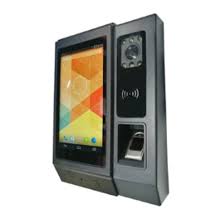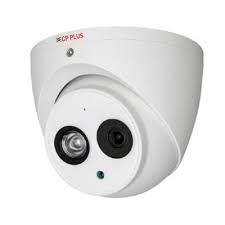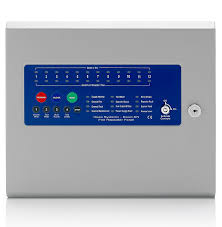In today’s fast-paced world, businesses are constantly seeking efficient and reliable methods to manage employee attendance. Traditional timekeeping methods like manual registers and punch cards are becoming outdated and prone to errors. This is where face and finger time attendance systems come into play.
Face and finger time attendance systems are advanced biometric technologies that have revolutionized the way organizations track employee attendance. These systems utilize facial recognition and fingerprint scanning technology to accurately record employee clock-ins and clock-outs.
One of the key advantages of face and finger time attendance systems is their accuracy. Unlike traditional methods, these systems leave no room for buddy punching or time theft. Each employee’s unique facial features or fingerprint patterns serve as their personal identification, ensuring that only authorized individuals can access the system.
Additionally, these systems offer convenience for both employees and employers. Employees no longer need to carry ID cards or remember PIN numbers. Instead, they simply need to present their face or place their finger on the scanner for a quick and hassle-free clock-in or clock-out process.
From an employer’s perspective, face and finger time attendance systems automate the entire attendance tracking process. This eliminates the need for manual data entry, reducing administrative tasks and saving valuable time for HR personnel. The system generates accurate reports automatically, providing real-time insights into employee attendance patterns.
Moreover, these systems enhance security within the workplace. By relying on unique biometric identifiers, unauthorized individuals cannot gain access to restricted areas or tamper with attendance records. This ensures a safer work environment while maintaining data integrity.
Implementing a face and finger time attendance system also promotes accountability among employees. With accurate records of clock-ins and clock-outs, it becomes easier to identify patterns of absenteeism or tardiness. This allows managers to address such issues promptly, leading to improved productivity levels.
Furthermore, these systems can be integrated with other HR management software solutions such as payroll processing software. Integration streamlines the entire payroll process by automatically calculating working hours based on the attendance records. This reduces errors and ensures accurate and timely salary calculations.
In conclusion, face and finger time attendance systems have become an indispensable tool for modern businesses. Their accuracy, convenience, enhanced security, and integration capabilities make them a valuable asset in managing employee attendance effectively. By adopting these advanced biometric technologies, organizations can streamline their operations, improve productivity, and ensure fair and transparent attendance tracking for all employees.
Frequently Asked Questions About Face and Finger Time Attendance Systems
- What are the benefits of using a facial or finger time attendance system?
- How accurate are facial and finger time attendance systems?
- How secure is the data collected by a face and finger time attendance system?
- What type of hardware is required to set up a face and finger time attendance system?
- What kind of software is needed to manage a face and finger time attendance system?
What are the benefits of using a facial or finger time attendance system?
Using a facial or finger time attendance system offers several benefits for businesses. Here are some of the key advantages:
- Accuracy: Facial and finger time attendance systems provide a high level of accuracy in recording employee attendance. These biometric technologies rely on unique facial features or fingerprint patterns, making it virtually impossible for employees to clock in or out on behalf of others (buddy punching). This eliminates errors and ensures precise attendance data.
- Elimination of Time Theft: With traditional attendance systems, employees can manipulate their working hours by arriving late, leaving early, or having someone else clock in for them. Facial and finger time attendance systems prevent time theft by accurately identifying each individual based on their unique biometric information.
- Convenience: These systems offer convenience for both employees and employers. Employees no longer need to carry ID cards or remember PIN numbers; they simply need to present their face or place their finger on the scanner for a quick clock-in or clock-out process. This saves time and eliminates the hassle of carrying physical cards.
- Enhanced Security: Facial and finger time attendance systems enhance security within the workplace. By relying on biometric identifiers, unauthorized individuals cannot gain access to restricted areas or tamper with attendance records. This ensures a safer work environment while maintaining data integrity.
- Streamlined HR Processes: Implementing these systems automates the entire attendance tracking process, reducing administrative tasks for HR personnel. The system generates accurate reports automatically, providing real-time insights into employee attendance patterns. Integration with other HR management software solutions such as payroll processing software further streamlines operations.
- Accountability: Accurate records of clock-ins and clock-outs help identify patterns of absenteeism or tardiness among employees. Managers can address these issues promptly, leading to improved accountability and productivity levels within the workforce.
- Cost Savings: By eliminating manual processes and reducing errors in attendance tracking, facial and finger time attendance systems help businesses save costs associated with time theft, manual data entry, and payroll errors. They also reduce the need for physical ID cards and related expenses.
Overall, the benefits of using facial or finger time attendance systems include increased accuracy, elimination of time theft, convenience, enhanced security, streamlined HR processes, improved accountability, and cost savings. These systems provide businesses with an efficient and reliable method of managing employee attendance while promoting fairness and transparency.
How accurate are facial and finger time attendance systems?
Facial and finger time attendance systems are known for their high accuracy. These biometric technologies rely on unique physical characteristics, such as facial features or fingerprint patterns, to identify individuals. The accuracy of these systems can be attributed to several factors:
- Unique Identifiers: Each person has distinct facial features or fingerprint patterns that are highly unlikely to be replicated by someone else. This uniqueness ensures that the system can accurately identify and verify individuals.
- Advanced Recognition Algorithms: Facial and finger time attendance systems utilize sophisticated algorithms to analyze the captured data and match it against stored templates. These algorithms are designed to handle variations in lighting conditions, angles, and other factors that may affect recognition accuracy.
- Multi-Factor Authentication: To enhance accuracy, some systems employ multi-factor authentication by combining facial recognition with fingerprint scanning or other biometric modalities. This further reduces the chances of false positives or false negatives.
- Continuous Improvements: Manufacturers of these systems continuously invest in research and development to improve their algorithms and hardware components. As a result, newer generations of facial and finger time attendance systems offer higher levels of accuracy compared to earlier versions.
However, it’s important to note that no system is 100% foolproof, and there can still be instances where errors occur. Factors such as poor image quality (due to low lighting conditions or obstructed views), changes in appearance (such as wearing glasses or facial hair), or damaged fingers can potentially affect recognition accuracy.
To mitigate these issues, it is recommended to ensure proper installation, calibration, and regular maintenance of the system. Additionally, providing clear instructions to employees on how to position their face or finger during authentication can help optimize accuracy.
Overall, while facial and finger time attendance systems are highly accurate, organizations should consider them as a reliable tool rather than infallible technology. Regular monitoring and occasional manual verification may be necessary for exceptional cases where the system encounters difficulties recognizing an individual’s face or fingerprint.
How secure is the data collected by a face and finger time attendance system?
Data security is a critical aspect of any biometric system, including face and finger time attendance systems. When it comes to the data collected by these systems, several measures are typically in place to ensure its security.
Firstly, the data collected by face and finger time attendance systems is usually stored in encrypted formats. Encryption transforms the data into an unreadable form, making it difficult for unauthorized individuals to access or decipher the information. This adds an extra layer of protection to sensitive employee data.
Secondly, reputable face and finger time attendance system providers implement strict access controls. Only authorized personnel, such as system administrators or HR managers, are granted access to the system’s database. This helps prevent unauthorized individuals from tampering with or extracting sensitive information.
Additionally, these systems often employ advanced authentication protocols to secure access to the database. This can include multi-factor authentication methods such as passwords, PINs, or even additional biometric factors like iris recognition. These measures ensure that only authorized individuals can access and manage the system’s data.
Furthermore, reputable providers prioritize server security and employ robust firewalls and intrusion detection systems to protect against external threats. Regular software updates and patches are also applied to address any vulnerabilities that may arise.
It is worth noting that some face and finger time attendance systems offer on-premises deployment options where organizations have complete control over their data storage and security measures. In such cases, it is crucial for organizations to implement appropriate security protocols within their own infrastructure.
Lastly, organizations should ensure that they choose a trusted and reliable provider for their face and finger time attendance system. Conducting thorough research on the provider’s reputation, their adherence to industry standards (such as ISO 27001), and their commitment to data privacy can help ensure that adequate security measures are in place.
While no system is entirely immune to potential risks or breaches, implementing robust security measures can significantly mitigate these risks. By selecting a reputable provider and following best practices in data security, organizations can help ensure the confidentiality, integrity, and availability of the data collected by their face and finger time attendance system.
What type of hardware is required to set up a face and finger time attendance system?
To set up a face and finger time attendance system, you will need the following hardware components:
- Facial Recognition Scanner: This is a specialized camera or sensor that captures and analyzes facial features to identify individuals. It should be capable of accurately recognizing faces from different angles and under varying lighting conditions.
- Fingerprint Scanner: A fingerprint scanner captures and reads the unique patterns on an individual’s fingerprint. It should be capable of high-resolution scanning to ensure accurate identification.
- Attendance Terminal: This is the device where employees will interact with the system to clock in and out. The attendance terminal typically includes a display screen, input buttons, and the facial recognition and fingerprint scanning modules.
- Server or Central Processing Unit (CPU): The server or CPU is responsible for storing and processing attendance data collected from the terminals. It should have sufficient processing power and storage capacity to handle data from multiple terminals.
- Network Equipment: A stable network connection is essential for real-time data transmission between attendance terminals and the central server. You will need network switches, routers, cables, and other necessary equipment to establish a reliable network infrastructure.
- Power Backup Systems: To ensure uninterrupted operation of the attendance system, it’s advisable to have backup power solutions such as uninterruptible power supply (UPS) units or generators in case of power outages.
- Optional Accessories: Depending on your specific requirements, you may consider additional accessories such as mounting brackets for securing attendance terminals, access control devices like card readers or keypads for restricted areas, or external storage devices for backup purposes.
- Software Application: Along with hardware components, you will need software designed specifically for managing employee attendance records using facial recognition and fingerprint scanning technology. This software should provide features like user management, attendance tracking, report generation, integration capabilities with other HR systems if required.
It’s important to note that different vendors may offer variations in hardware specifications and configurations based on their product offerings. Therefore, it’s recommended to consult with a reliable supplier or manufacturer to ensure you have the appropriate hardware components for your specific face and finger time attendance system setup.
What kind of software is needed to manage a face and finger time attendance system?
To effectively manage a face and finger time attendance system, you would typically need specialized attendance management software. This software is designed to work in conjunction with the biometric hardware, such as facial recognition or fingerprint scanners, to record and track employee attendance data. Here are some key features and functionalities that the software should ideally possess:
- Biometric Integration: The software should be capable of seamlessly integrating with the biometric hardware devices, allowing for accurate capture and verification of employee facial or fingerprint data.
- User Enrollment: It should have a user-friendly interface that enables easy enrollment of employees into the system. This involves capturing their biometric data, such as facial images or fingerprints, and associating it with their unique employee profiles.
- Attendance Tracking: The software should provide real-time attendance tracking capabilities. It should record clock-ins and clock-outs accurately, along with any additional attendance events like breaks or overtime.
- Reporting and Analytics: The software should generate comprehensive reports that provide insights into employee attendance patterns, including late arrivals, early departures, absenteeism rates, etc. This helps managers make informed decisions regarding workforce management.
- Leave Management: Ideally, the software should include features for managing employee leaves and vacation time. It should allow employees to request leaves and enable supervisors to approve or reject them within the system.
- Integration with Payroll Systems: Integration with payroll systems is crucial for seamless salary calculations based on attendance data. The software should be able to export attendance records in a format compatible with payroll processing software.
- Security Features: Robust security measures are essential to protect sensitive biometric data stored within the system. The software should employ encryption techniques and access controls to prevent unauthorized access or tampering.
- Scalability: Depending on the size of your organization, it’s important to choose a software solution that can accommodate your current needs while also allowing room for future growth.
- User Management: The software should have user management features that allow administrators to control access levels and permissions for different users, such as HR personnel, managers, and employees.
- User-Friendly Interface: Lastly, the software should have an intuitive and user-friendly interface that simplifies navigation and reduces the learning curve for administrators and end-users.
It’s worth noting that different vendors may offer variations in terms of features and functionalities. Therefore, it’s advisable to evaluate multiple options based on your specific requirements before selecting the most suitable attendance management software for your face and finger time attendance system.



